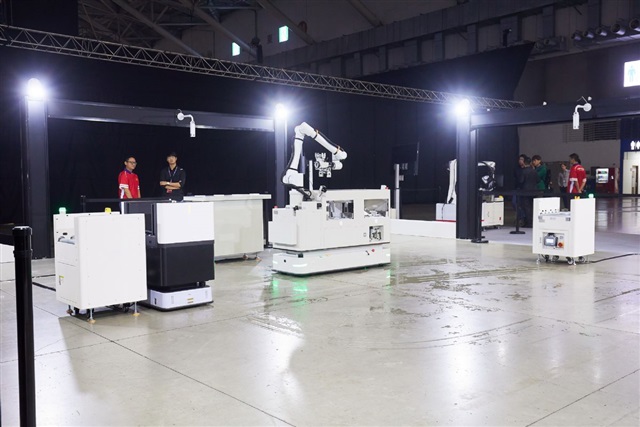TSMC chairman C.C. Wei recently revealed that major US tech clients anticipate the business potential of humanoid robots to be more than ten times that of electric vehicles (EVs). This has sparked widespread attention on who will emerge as the biggest winner in the AI robot era.
In response to rising labor costs and the global trend toward localized production, Foxconn is intensifying its investments in the robotics industry. The company has launched a critical three-pronged strategy targeting technology, AI, and application scenarios to achieve its goal of building a million-robot army.
Beyond mastering key components and the design and manufacturing capabilities of robotic bodies, Foxconn has recently integrated artificial intelligence (AI) technologies by developing its proprietary AI brain, FoxBrain. Collaborations with companies such as UBtech Robotics have enabled the practical deployment of robots across various application fields. By leveraging expertise in technology, AI, and real-world applications, Foxconn is rapidly assembling its own "robot legion."
Understanding that long-term growth cannot rely solely on demographic dividends, Foxconn reportedly began investing early in the robotics sector. Over a decade ago, it already promoted the vision of a "million-robot army." In its medium-to-long-term 3+3+3 strategic plan, robotics remains one of the three core future industries.
Industry insiders note that Foxconn's investment in robotics goes beyond simply producing operational machines; the company aims to create higher industrial value through robotics.
Its comprehensive approach includes existing strengths in precision assembly and opto-mechatronics integration, as well as servo drives, power amplifier controllers, position feedback mechanisms, axial motors, motor joints, obstacle avoidance sensor modules, mechanical design, and AI control integration—all supported by group-wide deployments across different domains.
Moreover, applying robots effectively in actual production environments requires moving beyond traditional programming-based approaches.
To this end, Foxconn has built its own computing power infrastructure and developed the Traditional Chinese AI large language model (LLM), FoxBrain. Using reinforcement learning techniques, FoxBrain is trained with data from experienced workers, machine parameters, and research findings, enabling robots equipped with FoxBrain to quickly integrate into production lines and assist with inspection and other processes.
What sets Foxconn apart—and what other robotics firms find difficult to match—is its extensive network of factories worldwide engaged in diverse product manufacturing.
The vast amount of accumulated production data not only enhances FoxBrain's training but also allows rapid correction of defects identified during real-world operations. This global footprint gives Foxconn a leading edge in both lighthouse factory initiatives and robot implementation.
Three stages of AI-enabled factories
Foxconn chairman Young Liu previously outlined a three-stage AI-enabled factory development process: digital twin simulation design, achieving 80% automation via AI-controlled workflows, and finally, physical factory construction combined with robot applications. While he did not explicitly state it, these stages are currently underway at Foxconn.
Currently, Foxconn is collaborating with Nvidia's Omniverse platform to support new factory planning in locations like Mexico through digital twin integration. Meanwhile, Foxconn's self-developed FoxBrain has been embedded within AI agents controlling robots and machinery, allowing real-time adjustments and workflow optimization. These efforts have moved well beyond conceptual validation and are actively operating in production settings.
Besides earlier cooperation with China's UBtech Robotics, deploying their robots in Shenzhen and Zhengzhou production sites, Foxconn is negotiating with Nvidia to introduce robot collaboration in its upcoming AI server factory in Houston, Texas. This facility is expected to go live in the first quarter of 2026, supporting AI server assembly and testing processes.
Sources indicate that although production lines remain in the planning and construction phase, implementing robot collaboration in regions with special requirements is inevitable. Foxconn plans to mobilize the full group resources to ensure the successful deployment of collaborative robots on the shop floor.
Additionally, market expectations suggest that more concrete demonstrations of production collaboration robots and medical service robots will be showcased at Hon Hai Tech Day in November 2025.
Article edited by Jack Wu




